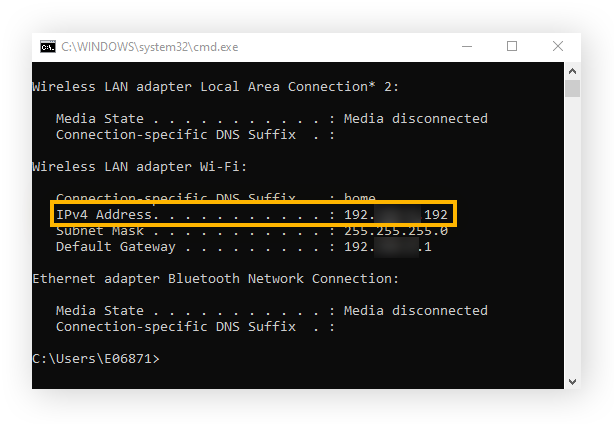
Introduction:
Class D IP addresses are a unique subset of IP addresses used for multicasting in network communication. While most IP addresses are designated for unicast communication (one-to-one), Class D addresses are reserved specifically for multicast communication (one-to-many). In this blog, we’ll explore what Class D IP addresses are, how they differ from other IP address classes, and their significance in network communication. By understanding the basics of Class D IP addresses, you’ll gain insights into their role in enabling efficient and scalable multicast communication over IP networks. Let’s dive into the world of Class D IP addresses and unravel their mysteries.
What is the purpose of Class D IP addresses?
Class D IP addresses are specifically reserved for multicast communication, allowing a single sender to transmit data packets to multiple recipients simultaneously. This is particularly useful for applications such as multimedia streaming, online gaming, and video conferencing, where the same data needs to be delivered to multiple users efficiently.
How are Class D IP addresses different from other IP address classes?
Unlike Class A, B, and C addresses, which are used for unicast communication, Class D addresses are exclusively used for multicast communication. This means that while unicast addresses are used to send data to a single destination, multicast addresses are used to send data to multiple destinations simultaneously. This unique feature makes Class D addresses essential for various applications requiring efficient group communication.
- What are Class D IP addresses?
Class D IP addresses are a specific range of IPv4 addresses designated for multicast communication. Unlike unicast addresses, which facilitate point-to-point communication, multicast addresses enable the transmission of data packets to multiple recipients simultaneously. This capability is particularly valuable for applications requiring one-to-many or many-to-many communication paradigms, such as video streaming, online gaming, and content distribution networks.
- Range of Class D IP addresses
Class D IP addresses are identified by their first octet falling within the range of 224 to 239 in the IPv4 address space. This range is reserved exclusively for multicast purposes and cannot be used for unicast or broadcast communication. By designating this range for multicast, network administrators can efficiently manage and allocate resources for group communication scenarios.
- Characteristics of multicast communication
Multicast communication differs from unicast and broadcast communication in several key aspects. While unicast communication involves the transmission of data from one sender to one receiver, multicast allows a single sender to reach multiple recipients simultaneously. This efficiency is achieved by leveraging network infrastructure to replicate and deliver data packets only to the intended recipients, conserving bandwidth and reducing network congestion.
- Applications of Class D IP addresses
Class D IP addresses find applications in various domains where efficient group communication is essential. For instance, in multimedia streaming services, such as online video platforms and live event broadcasting, multicast enables the simultaneous delivery of content to multiple viewers. Similarly, in online gaming environments, multicast facilitates real-time interaction among players, enhancing the gaming experience and reducing latency.
- Implementation and support
Modern networking equipment and protocols are designed to support multicast communication, including the handling of Class D IP addresses. Routers, switches, and other network devices are configured to manage multicast traffic efficiently, ensuring that data packets are delivered to the intended recipients without unnecessary duplication or congestion. Additionally, multicast routing protocols, such as Protocol Independent Multicast (PIM), enable routers to dynamically route multicast traffic across the network.
- Challenges and considerations
While multicast communication offers significant benefits, it also presents challenges in terms of network configuration, management, and security. Proper network design and configuration are essential to ensure optimal performance and scalability, especially in large-scale deployments. Additionally, network administrators must implement appropriate security measures to prevent unauthorized access or abuse of multicast resources.
- Future prospects
As the demand for multimedia content delivery, real-time collaboration, and IoT (Internet of Things) applications continues to grow, the relevance of multicast communication and Class D IP addresses is expected to increase. Network infrastructure and protocols will continue to evolve to support the efficient delivery of multicast traffic, enabling innovative and immersive experiences for users worldwide.
FAQS
1: Are Class D IP addresses publicly routable on the internet?
No, Class D IP addresses are not publicly routable on the internet like Class A, B, and C addresses. Instead, they are reserved for multicast communication within specific networks or domains. Class D addresses fall within the range of 224.0.0.0 to 239.255.255.255 and are typically used for applications where data needs to be transmitted to multiple recipients simultaneously, such as video streaming, online gaming, and audio conferencing.
2: How are Class D IP addresses allocated and managed?
Class D IP addresses are allocated and managed by the Internet Assigned Numbers Authority (IANA), which is responsible for the global coordination of the IP address space. Within the Class D range, certain multicast addresses are reserved for specific purposes, such as routing protocols, administrative tasks, and research projects. Network administrators can request multicast address assignments from the IANA or the appropriate Regional Internet Registry (RIR) to support their multicast communication requirements.
Final Thoughts:
Understanding Class D IP addresses is essential for comprehending the broader landscape of IP address allocation and usage. While Class D addresses may not be as commonly encountered as Classes A, B, and C, they play a crucial role in facilitating efficient multicast communication across networks. As the internet continues to evolve and the demand for multimedia and real-time applications grows, the significance of Class D IP addresses will only become more pronounced. By grasping the fundamentals of Class D addressing, network administrators and IT professionals can better optimize their network infrastructure to support diverse communication needs and enhance overall connectivity. Embracing the unique characteristics and capabilities of Class D IP addresses empowers organizations to harness the full potential of modern networking technologies for collaboration, entertainment, and information dissemination.
